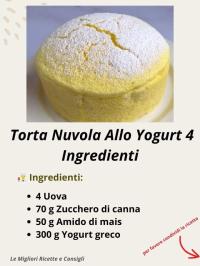Copy Link
Add to Bookmark
Report
Lambic Digest #0507

From postmaster at lance.colostate.edu Sat Dec 10 03:38:20 1994
Status: O
X-VM-v5-Data: ([nil t nil nil nil nil nil nil nil]
["10098" "Sat" "10" "December" "1994" "00:30:16" "-0700" "subscription requests only" "lambic-request at lance.colostate.edu" nil "253" "Lambic Digest #507 (December 10, 1994)" "^From:" nil nil "12" nil nil nil nil]
nil)
Received: from longs.lance.colostate.edu by goodman.itn.med.umich.edu with SMTP id AA06792
(5.65b/IDA-1.4.3 for spencer at hendrix.itn.med.umich.edu); Sat, 10 Dec 94 03:38:16 -0500
Received: (daemon at localhost) by longs.lance.colostate.edu (8.6.9/8.6.5a (LANCE 1.01)) id AAA05658 for reallambic at longs.lance.colostate.edu; Sat, 10 Dec 1994 00:30:16 -0700
Message-Id: <199412100730.AAA05658 at longs.lance.colostate.edu>
Reply-To: lambic at lance.colostate.edu (postings only - do not send subscription requests here)
Errors-To: lambic-request at lance.colostate.edu
From: lambic-request at lance.colostate.edu (subscription requests only - do not post here)
To: lambic at lance.colostate.edu
Subject: Lambic Digest #507 (December 10, 1994)
Date: Sat, 10 Dec 1994 00:30:16 -0700
Lambic Digest #507 Sat 10 December 1994
Forum on Lambic Beers (and other Belgian beer styles)
Mike Sharp, Digest Coordinator
Contents:
brett behavior (Todd Gierman)
Brettanomyces article (bickham)
Re: Lambic Digest #506 (December 09, 1994) (Ed Hitchcock)
Lactic acid Bacteria in Brewing (Brian A Nummer)
From one prick to another ("Andrew R. Ruggles")
Brett/hardness/brett again (Algis R Korzonas +1 708 979 8583)
Send article submissions only to: lambic at longs.lance.colostate.edu
Send all other administrative requests (subscribe/unsubscribe/change) to:
lambic-request at longs.lance.colostate.edu
Back issues are available by mail; send empty message with subject 'HELP' to:
netlib at longs.lance.colostate.edu
Phil Seitz' series on Brewing Belgian Beer is available; the index
from the archives lists individual topics and the complete set.
Start with the help message above then request the index.
A FAQ is also available by netlib; say 'send faq from lambic' as the
subject or body of your message (to netlib at longs.lance.colostate.edu).
----------------------------------------------------------------------
Date: Fri, 9 Dec 1994 07:13:49 -0500 (EST)
From: Todd Gierman <tmgierma at acpub.duke.edu>
Subject: brett behavior
Jim writes of Aaron:
AAron writes:
% 1) I have several brett cultures which produce copius gas. (At least
% i hope that all 3 are brett!!) Creamy foamy head... certainly
% not. But shake the jar and they out-gas for sure.
>And next you are going to tell me you have had these checked for morphology,
>growth on cycloheximide, pseudomycellia devlopment on corn meal agar, and
>acid production on caco3 agar, right. :-)
I would say from what I have seen that when you accumulate enough Brett
sediment and then add more fresh wort on top of that you will indeed get
a more vigorous ferment going. This does often result in some head
formation with a creamy, brown dollop of yeast in the middle. Not much
gas, though until you give it a shake. Out gassing is a good way of
describing it.
More importantly use what you have at your disposal, namely your nose.
In liquid culture, Brett has a distinct odor: like acid and cider, more
or less, floral with apples thrown in. If it just smells like a Belgian
ale, it's an impostor.
Jim doesn't like impostors ;-)
Todd
------------------------------
Date: Fri, 9 Dec 1994 08:57:38 -0500 (EST)
From: bickham at msc.cornell.edu
Subject: Brettanomyces article
Someone recently asked about an article about sensory aspects of brett.
in a book, _Beer and Wine Production_ reviewed by Fix in Brewing
Techniques. I've read it and although it's from a wine standpoint,
there is a lot of useful information there. At the risk of being
swamped, or even worse, being sued for copyright infringement, I can
probably mail copies to anyone who's interested. It'll cost me 90 cents
for copying and mailing, so although I don't want to make any money,
it'd make life easier to round it to a buck. So simply mail $1 to
me at:
Scott Bickham
C-17 Clark Hall
Cornell University
Ithaca, NY 14853
and I'll send the article. I'd be willing to FAX it, but with the 100%
overhead we pay here, it's not a reasonable option financially.
If anyone has a problem with my offer to send copies of this article,
please send private e-mail.
Cheers,
Scott
========================================================================
Scott Bickham
bickham at msc.cornell.edu
=========================================================================
------------------------------
Date: Fri, 9 Dec 1994 10:48:03 -0400 (AST)
From: Ed Hitchcock <ehitchcock at sparc.uccb.ns.ca>
Subject: Re: Lambic Digest #506 (December 09, 1994)
From: tmgierma at acpub.duke.edu (Todd Gierman)
> Well, beer is a complex chemical soup and I guess lambic is more so. But
> more to the point, I was trying to say that the turbid mash (or a variation
> thereof) and Brett encourage the usage of one another. That is to say,
> Brett turns this pathetic, lousy mash into something drinkable (I mean do
> you want to drink a 1020-30 terminal gravity, starch-laden, tannic
> beverage?). In turn, this mash is still used with the idea that it will
> enhance Brett character. I know, nothing new, but I think that it gets
> lost sometimes.
In my ancient beer experiment (Brewing Techniques, Sept.-Oct.
1994) the end product was a 1020-1030 terminal gravity starch laden
beverage (okay, not tannic) and really was not bad at all. Just a data
point. So there.
----------------
Ed Hitchcock, now on the right side of the student/staff division
ehitchcock at sparc.uccb.ns.ca
------------------------------
Date: Fri, 09 Dec 1994 11:01:18 -0600 (CST)
From: Brian A Nummer <BAN5845 at tntech.edu>
Subject: Lactic acid Bacteria in Brewing
I have finally secured a spot in Zymurgy for my article "Lactic acid bacteria
in Brewing". As a scientist I feel compelled to have my article reviewed by
some of you knowledgable NET-Brewers. I need 2 or 3 brewers familiar with
using lactic acid bacteria in brewing as well as with the sour beer styles. If
you are interested please e-mail me direct at BAN5845 at TnTech.edu.
TIA
Brian Nummer
------------------------------
Date: Fri, 9 Dec 94 12:29:48 -0500
From: "Andrew R. Ruggles" <rugg0002 at gold.tc.umn.edu>
Subject: From one prick to another
I wrote:
> % I misplaced my journal to find out the timing, but I distinctly remember the
> % GWKent Brett and the Wyeast Brett cultures producing foamy heads. Not tight
> % fine white foam, but rather a more tannish foam with larger sustained
bubbles.
> % The Boon Gueze I cultured (more than a year ago?) also had a similiar foamy
> % head. In 8 hours? I don't think so -- more like 2-3 days.
To which Jim replied:
> Again you are assuming that what you bought is what the company says it is.
> You have to take their word for it. Boon gueeze ahs saccharomyces in large
> amounts :-) did the starter taste like regualr yeast?
One co. has a bad time with one organism and now you are questioning the
labeling practices of all of them? You must have a field day in the grocery
store! (It looks like a can of beans, but I'd be just assuming that.) The
starters made from both pure Brett strains *had* the characteristic flavor and
smell profile of a typical Brett yeast.
As far as the Boon starter went, it did *not* taste like a "regular" yeast. It
was intensely sour and dry, like the original bottle, so of course, I pitched
it. The resulting pLambic was like-wise, intensely sour. I'm no biochemist, but
I was under the impression that most Saccharomyces could not survive in the low
pH. Is this right? Or do I have the mistaken logic that if you can build up a
starter to a certain taste, pitch it in 5 gallons, to which it aquires the taste
profile of the starter, that if I haven't had the microorganisms identified,
classified and otherwise sanctified, that it's still a bastard? My guess is
that anything made on the banks of the Mississippi is going to be a
bastardization of the product from the Zenne. ;-)
Cheers,
Andrew
------------------------------
Date: 9 Dec 94 21:39:00 GMT
From: korz at iepubj.att.com (Algis R Korzonas +1 708 979 8583)
Subject: Brett/hardness/brett again
Mike writes:
>_ASSUMING_ that you really where amazing anal, autoclaved the media, etc.
>I'd be wondering if you started with Brettanomyces. I certainly don't
>have a strain that grows this fast, nor have I heard of one. I've also
>never seen one generate a foamy head.
I have to agree that all the yeasts that have in my arsenal that I believe
are Brettanomyces are very slow fermenters. I did however get a head on
a fermentor that contained nothing other than a very dextrinous 1.040 (if
I recall correctly) wort and the Wyeast Brettanomyces. The head took about
6 or 8 weeks to form and is perhaps 1/2" at best. These yeast are verrrrrry
slooooowwww fermenters.
***************
Jim writes (quoting Rob):
>% 2. Personal
>% The careful (read: massproduction) or newer (read: Boon) lambic brewers can
>% produce an excellent product showing very little hardness (read: Pedio).
>
>Based on what has coem from Leuven I think a lot of "hardness" has to do with
>brett and not pedio. Also the hardness can be caused by either early or late
>acetobacter growth.
I believe that Guinard wrote that a "hard" lambik is one that has significant
acetic acid levels and that one that is not "hard" contains mostly lactic
acid for its acidity. This is the definition of "hard" that I maintain when
speaking about lambiks.
I'm also surprised that Jim did not even mention that his National BOS
pGueuze was an extract beer when responding to Todd's:
% The turbid mash is probably important for producing Brett character in
% that it results in higher extraction of polyphenols from husks (does it
% not?) in addition to starch.b.
I had the pleasure of judging it in the 1st round and tasting it after the
second round and believe me, it has a horsey component. Back to the drawing
board...
Another bit of random information correlation: Someone (Todd, I believe)
wrote about the importance of oxygen in Brett growth. As far as I know,
Martin was the first to suggest this and it is interesting to note that Jim
fermented in polyethylene, which, as we all know, is notorious for being
oxygen-permiable. The yeast strains used are just as important because my
31-month-old pKriek has no noticable horseyness despite having spent its
first 3 or 4 months in a 20 gallon, white, HDPE, Rubbermaid Brute.
Jim also asks about experience with the Wyeast Brett. I have a batch
fermenting solely with that yeast and as yet, it has not developed a
horsey character -- just a variety of fruity flavours and a slight,
pleasant sourness. Then again, it is being fermented in glass. Perhaps
I should scrap this experiement and start again in plastic.
Al.
------------------------------
End of Lambic Digest
************************
-------






















